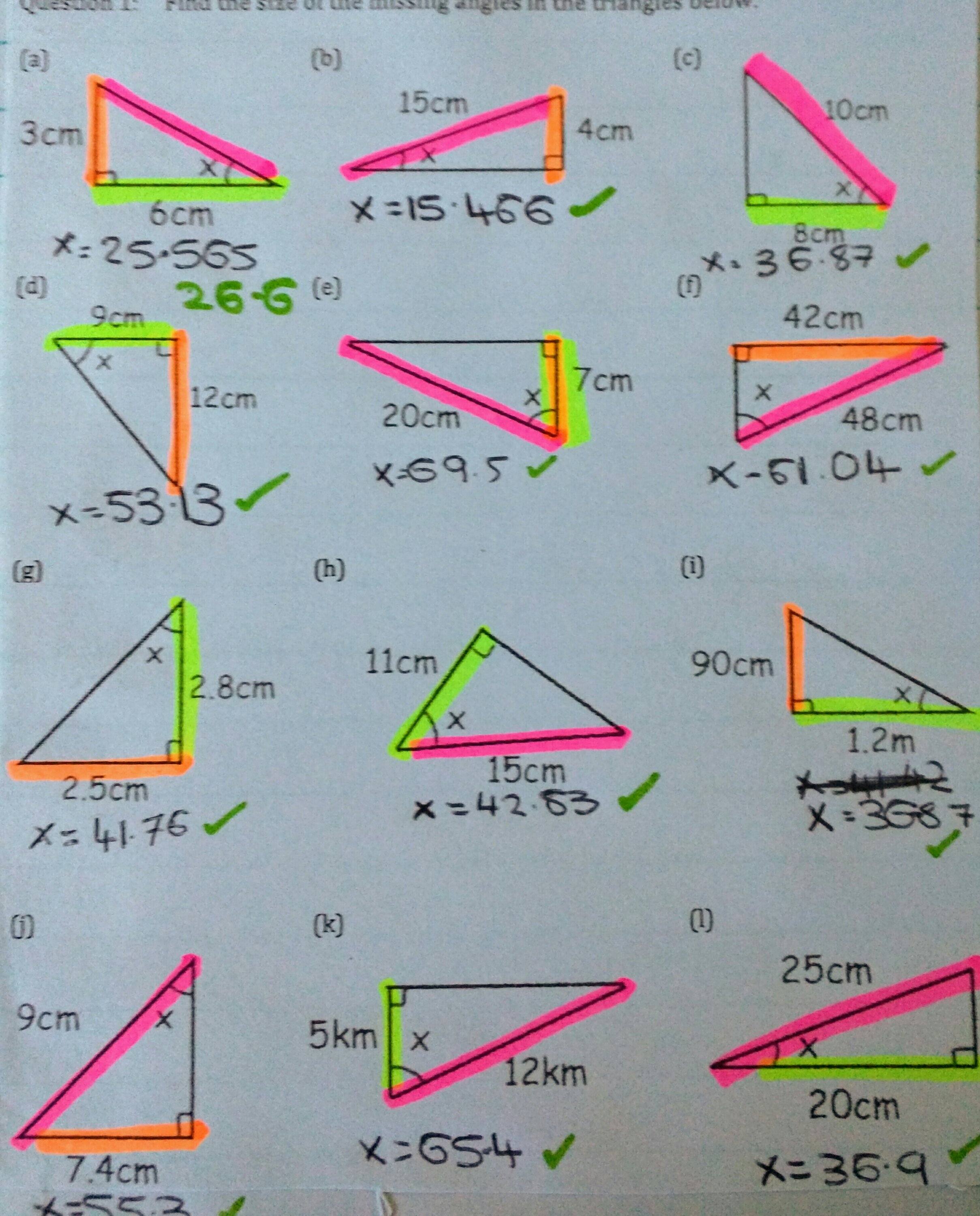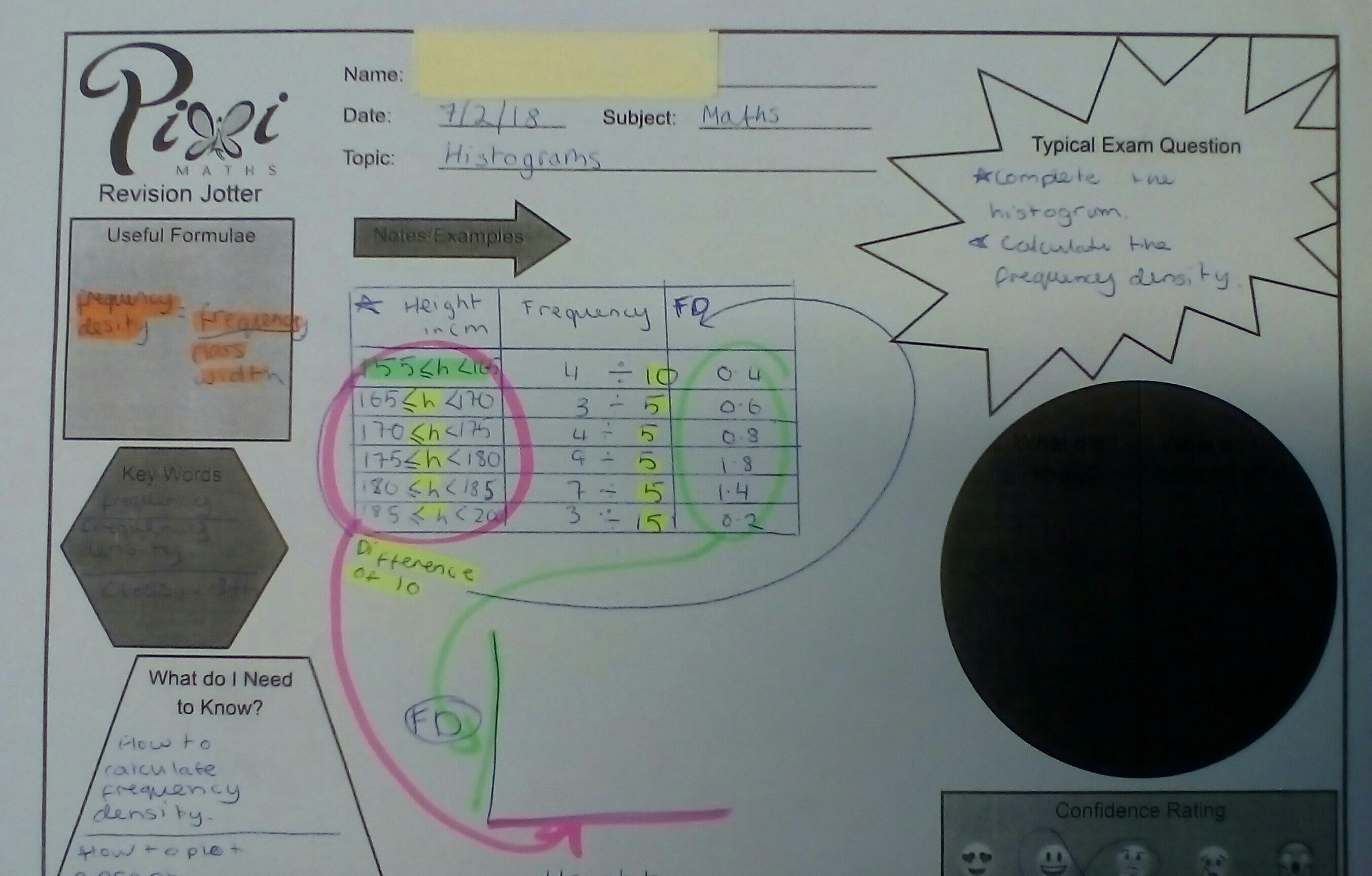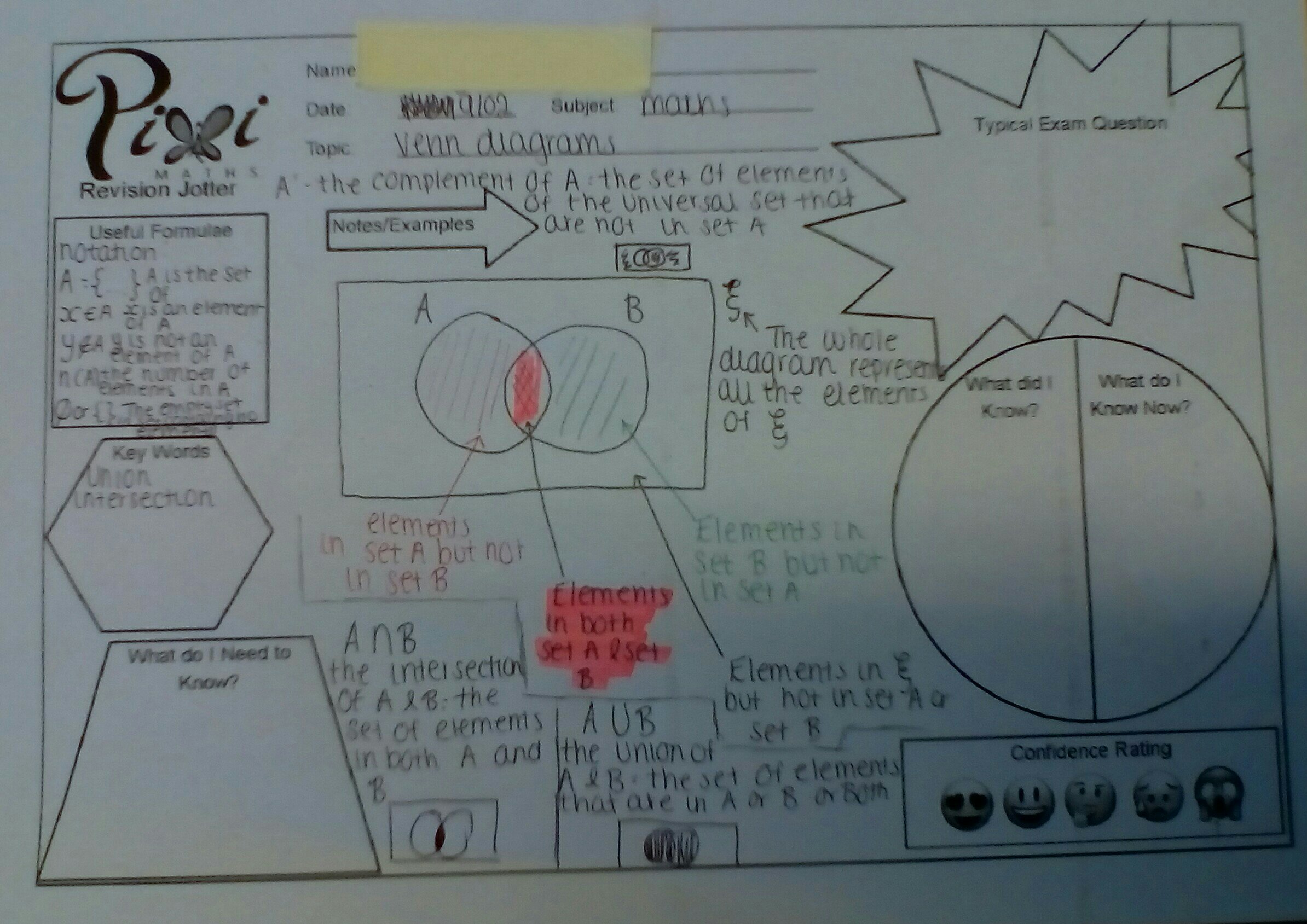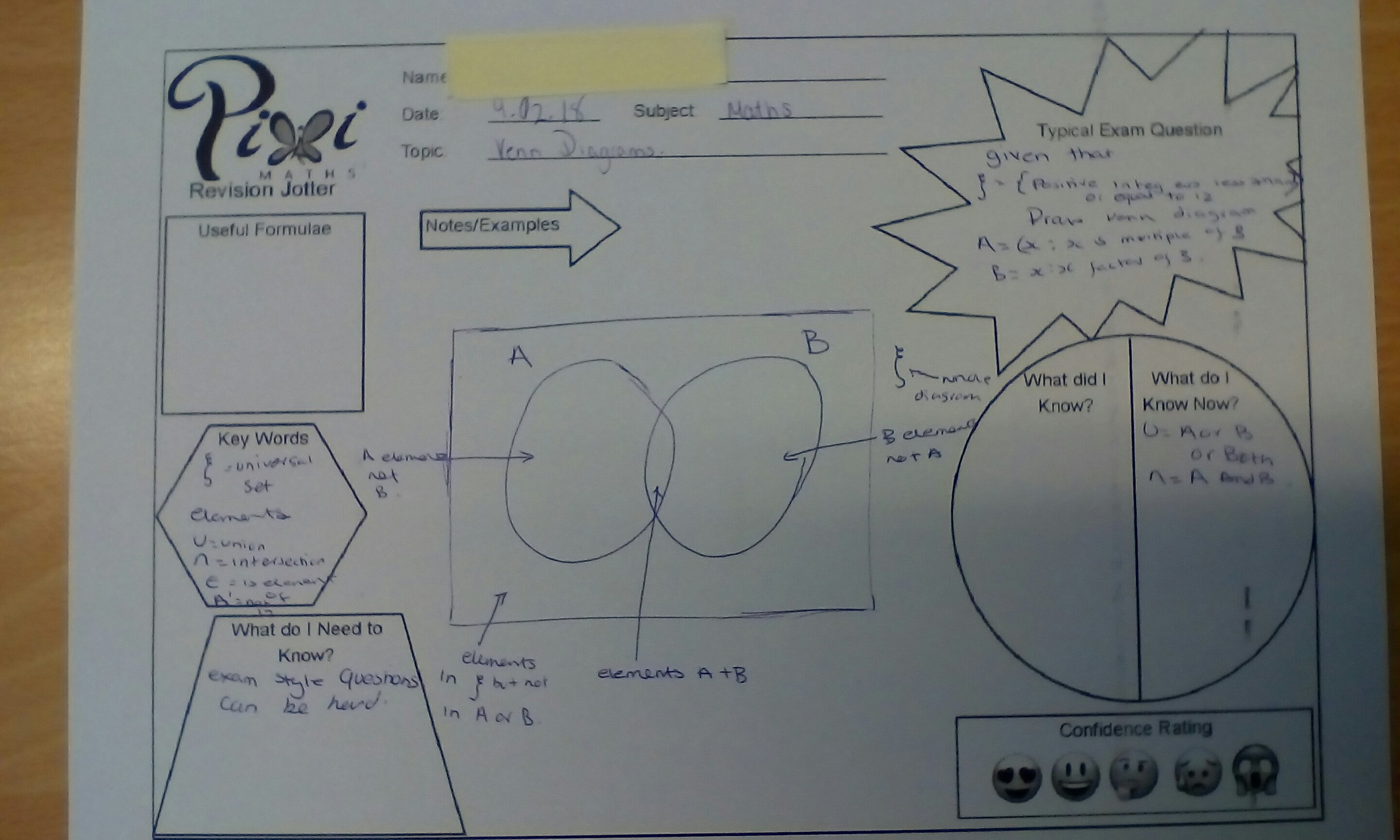This student really knows how to make eye-catching notes.

There was even a key:


This student really knows how to make eye-catching notes.

There was even a key:

With the exams looming large, I thought I’d share how my class have been revising. To give you some context roughly a third of the class are doing Foundation GCSE, aiming for at least a Grade 4. The rest are doing Higher and aiming for a Grade 5 or better. We have three, one hour, lessons a week. I’m rotating between doing an exam paper, a whole class revision activity (eg a revision clock) and tiered revision.
I know if I tell the students to revise independently the results are going to be mixed. Some will be brilliant, some will be more laid back. To resolve this I pick a topic (or two) from each tier that I know they need to improve on from or that they have requested. It’s helpful if there is a theme to the work. I’ve recently done things like y=mx+c (F) with plotting inequalities (H).
Now the genius part: PixiMaths revision jotters
How to run the session
Photocopy a big stack of revision jotters. If you are doing black and white copying, use the b&w version. We requested the b&w version and, because PixiMaths is awesome, it is now on the website.
Clearly put on the board which topic each tier is revising
Eg Foundation: exact trig values, Higher: trig graphs
Give students 5-10 minutes to fill their revision jotters with everything they know. Have textbooks or maths dictionaries available to fill in the gaps. You may find that Higher students want to do the Foundation topic too – no problem, just make sure they have two jotters. Due to the complexity of the Higher topic, they will need more time to make initial notes.
My students are allowed headphones in revision sessions. At this point it’s headphones in for Higher and out for Foundation.
Do a skills recap on the board (exact trig values), with maybe an exam question too. Students can ask questions on the topic and add to their jotter. Then have a worksheet for students to do eg Corbett Maths or KeshMaths GCSE exam questions booklets. They can refer to their revision jotter or scan the Corbett Maths QR code for extra help.
Swap over. Headphones in for Foundation and out for Higher.
Repeat the process for Higher, with drawing trigonometric graphs. Issue an appropriate worksheet.
Once you’re done, make a judgement call. Are there students who could push it further? Maybe transform a trig graph or problem solve? Go for it. Foundation are busy, Higher are busy, spend some time stretching your most able. Every mark counts.
A huge thank you to PixiMaths for the revision jotters (and everything else).
Examples of students’ work
Shared with permission of students. You can see that they have personalised them to meet their needs and some are a work in progress. Also, the b&w jotter photocopies so nicely.




Here is a little starter picture for you:

This is the ‘Pont y Ddraig’ at the marina in Rhyl, in North Wales. What mathematical questions could be inspired by this?
‘Pont y Ddraig’ means Dragon Bridge. Find out more about the bridge here
If you’ve been a regular reader of this blog you may remember a post in 2014 advocating the use Duck Tape to help with practical investigations. The post was: http://mathssandpit.co.uk/blog/?p=1585
I’ve recently reused the mechanics activity with a new class of Year 12 students. They had only just started mechanics and were familiar with models and suvat equations. We timed four different objects being dropped, under gravity, down a stairwell. The items had a variety of masses: a paper helicopter, a light plastic ball, a small sponge and a dense juggling ball. We meticulously timed each drop and double checked the height.
I asked the students to work out the velocity of each object on impact with the ground. It was akin to lighting the blue touch paper and standing back …
They are a competitive bunch and raced ahead to use the correct suvat equations to calculate the velocity. Then the fireworks started!
Part of the class insisted that the juggling ball must have the highest velocity. Part of the class insisted the velocities were the same for all of the objects. The rest were catching up and wondering what all the discussion was about. I innocently gathered their ideas on the board and asked them what was going on. Those who had used initial velocity, time & distance to find the final velocity had differing answers for each object. Those who had used initial velocity, distance and acceleration had a consistent answer.
Suddenly a hand shot up and said “Because we model objects as particles, their mass doesn’t matter so we can’t use the times”. This was followed by assorted groans from the class – especially those who’d used the individual times of the objects.
The variation of the original activity was to emphasise prior learning on setting up mathematical models for solving mechanics problems. Objective achieved!
(Obviously later in the course we’ll look at the impact of mass on mechanical models, but this was early days)
This is a quick post following a discussion in the office today. The prompt was a colleague asking “How do you teach rotation to a child with two broken arms?”
The last ‘child’ I taught with two broken arms was a sixth former and it involved profuse photocopying of notes.
But back to the problem. You could cut out shapes and rotate them on a gridded whiteboard. The student could get a feel for what was going on and be part of the whiteboard Q& A session. For the main classwork, photocopy the worksheet or textbook and increase it to A3. Make a second colour copy and cut out the shapes in the questions. The student can then move these into the correct places to answer the questions. The work could then be photographed, emailled to the teacher or printed out.
Of course I do mean use a phone to take a picture, because it’ll take more than two broken arms to stop a teenager using their mobile phone.
(BTW I’m not making light of the student’s problem. It’s important we think around these issues to ensure all students can access the curriculum)
Have you noticed that textbooks are okay with graphs, until you need some interpreting graphs questions?
 Image Credit: trustedreviews
Image Credit: trustedreviews
I thought that mobile phone tariffs would be a good starting point for comparing fixed charges and rates. Using the iPhone X as a starting point, I’ve put together a discussion starter and couple of additional questions. All the tariffs are actual offers available at the time of writing.
You could start by looking at the graph and asking students what they notice, you could give them the tariffs and ask them to generate graphs or you could give them the data and ask them to plot the graph and derive the tariffs. It’s up to you!
The graph is deliberately vague so that students can discuss trends without getting obsessed by the detail of the numbers. Everything is downloadable below.
If you are looking for a very last minute gift for that special Mathematician in your life, or you have Christmas money to spend, may I recommend “Geometry Snacks” by Ed Southall (@solvemymaths) and Vincent Pantaloni (@panlepan)?
It is a nearly pocket sized book of geometry puzzles whose construct of simple, elegant problems can decieve the unwary into thinking the solutions are easy. This is a book for those who embrace mathematical rigour, rather than repetitious guesswork.
In fact, forget buying it for someone else – get one just for yourself!
Geometry Snacks is published by Tarquin (ISBN: 9 781911 093701)